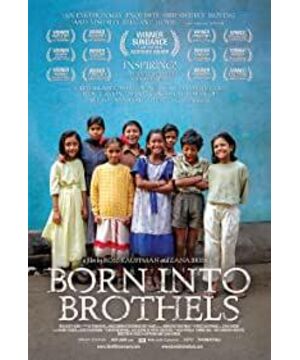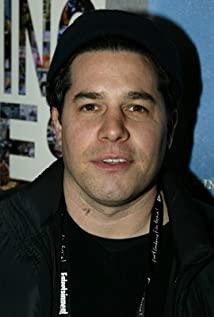All birth, old age, sickness, death, good fortune and longevity have been determined. From the moment you are born, your life trajectory is doomed. What kind of starting point, what kind of road to go, what kind of life to live. Who are your parents, where is your home, who are your playmates, these are the things you are born with that hold you on a track like screws. You can walk down this path effortlessly, live and die without suspense.
You can also pry off those screws one by one and go to another way. Cheating is dangerous and strenuous. Sometimes someone drags you, sometimes you are alone. It is possible that you have spent a lot of time prying open more than half of the nails, and then gave up. Chances are, you escaped and got caught again.
In India's red light district, a group of children were born here. Their mother was in prostitution and their father was on drugs. Their parents are their future.
Here comes Zana, an American photographer. Before her, this group of children probably hadn't seen a camera. She had an idea, to give each of them a camera, to teach this group of children photography, to lend their eyes to see themselves.
Use their voices to tell their stories.
Thus, there is "Born in a Brothel", the world seen by children's eyes, and their stories told by children's voices.
I love this angle. Compared with other records, it is more real, more original and more complete. Everyone has a camera in his eyes, recording the world he sees.
They say "hope" is a word we don't have here; it's good to get used to the pain, and the poor actually have their happy moments.
Zana wants to help them. The only way is to keep them away from the red light district. She went to contact boarding schools, to persuade every family to send their children to boarding school. She brought her children's photographs to New York for photography exhibitions and auctions.
Their photos are getting attention. On the front page of India's largest local newspaper, TV interview. Of the eight children, five went to boarding school. In front of the camera, they are dreaming that when I grow up I want to be a photographer, I want to go to college.
It's heartening to see that the fate of these children is about to be changed.
Until the last three minutes, a follow-up report in the subtitles, pujia's mother asked her to drop out of school, Shanti left school, Gour stayed at home, Suchitra's aunt did not allow her to leave the brothel….
When I was a child, I read a fairy tale about a witch who captured a pair of siblings and locked them in the house. The siblings tried to escape. But every day they escaped, they ran all day, and at night the witch would surely bring them back again.
Fate is like this witch, if you don't have enough determination, wisdom, opportunity, and noble people, you can't beat it.
It sounds sad.
But there is no savior in this world.
I used to think that recording is a good channel, by revealing the truth, let the audience pay attention to them, at least two hours of watching, let the audience think "how can I help them?"
But the question is, how to ensure that there are audiences ? How to ensure that the audience will think after watching it? How can you guarantee that there is any way to change the status quo?
Even if you helped these eight children, there are still 800 or 80,000 children.
This is a very naive question.
Especially when you are infected and desperately trying to hurt the fate of others. Suddenly found that they live in a red light district. And yourself, in a huge red light district.
You want to hold the lens at those "truths", but find that the wide-angle lens can only take one side, the lens is aimed at one side, and the side facing away cannot be seen.
It's like you have to pry open a dozen screws, turn around and find that there are hundreds, thousands more.
Some have been rusted to death, and they are fixed there, motionless.
View more about Born Into Brothels: Calcutta's Red Light Kids reviews








